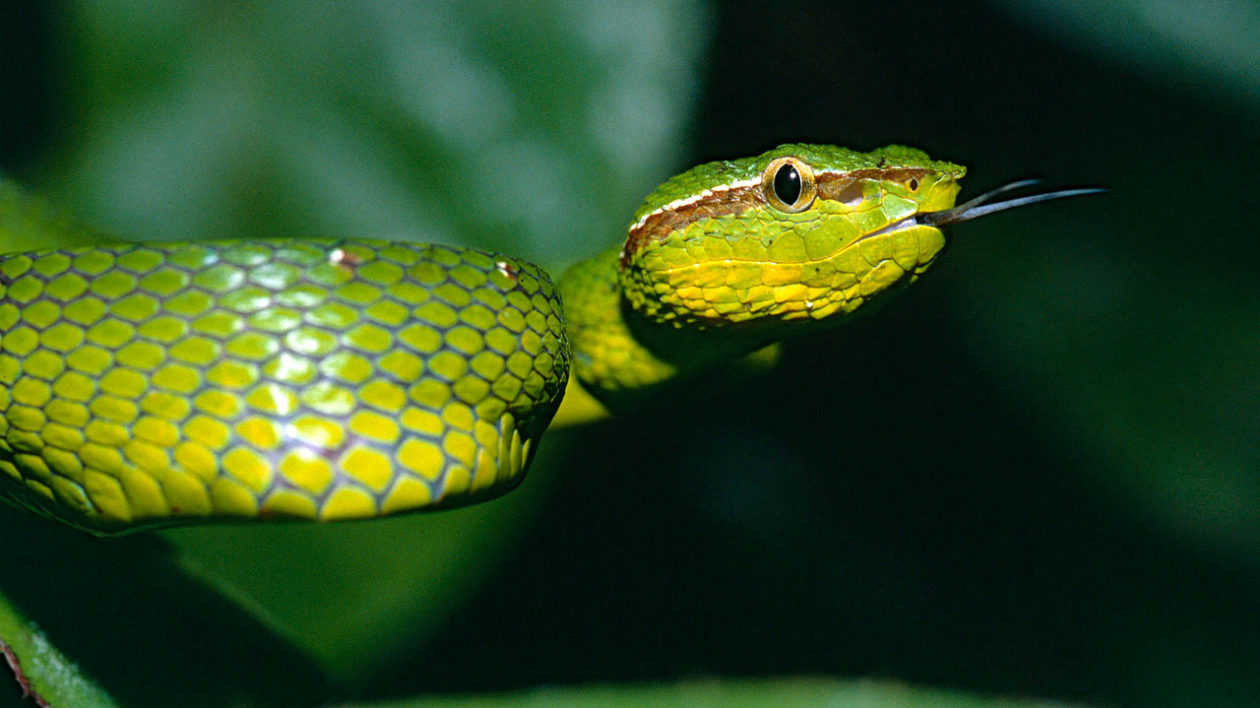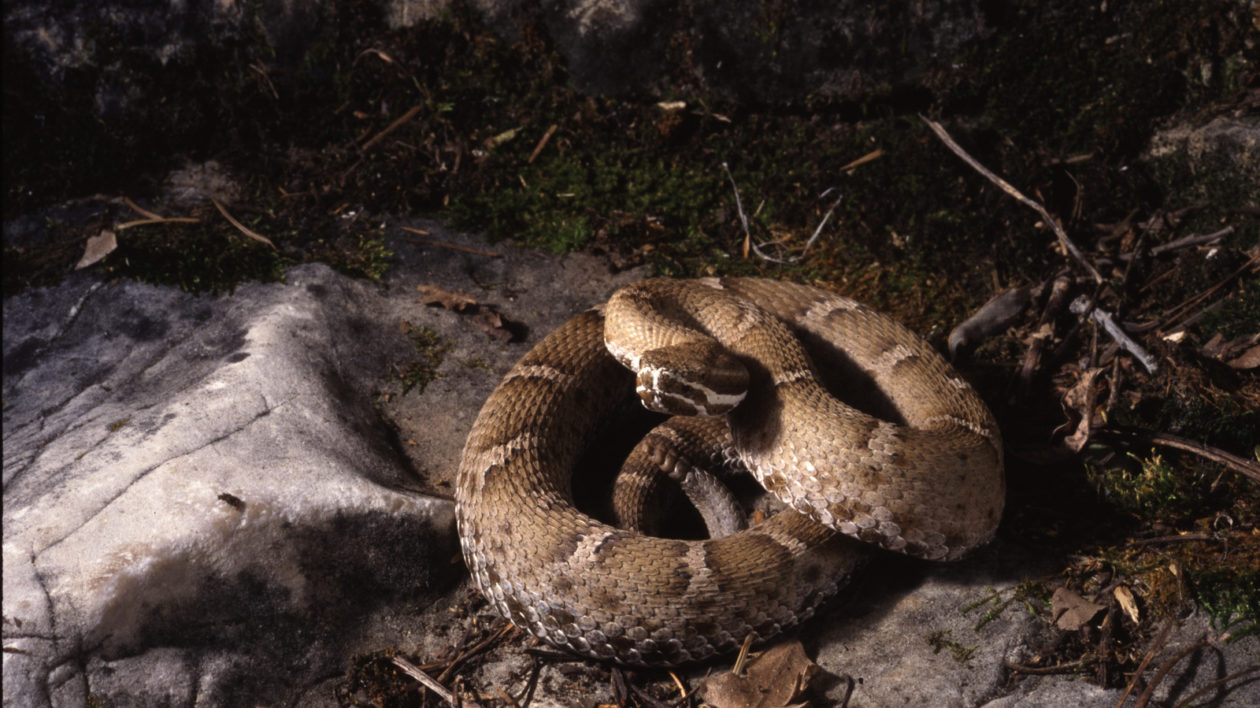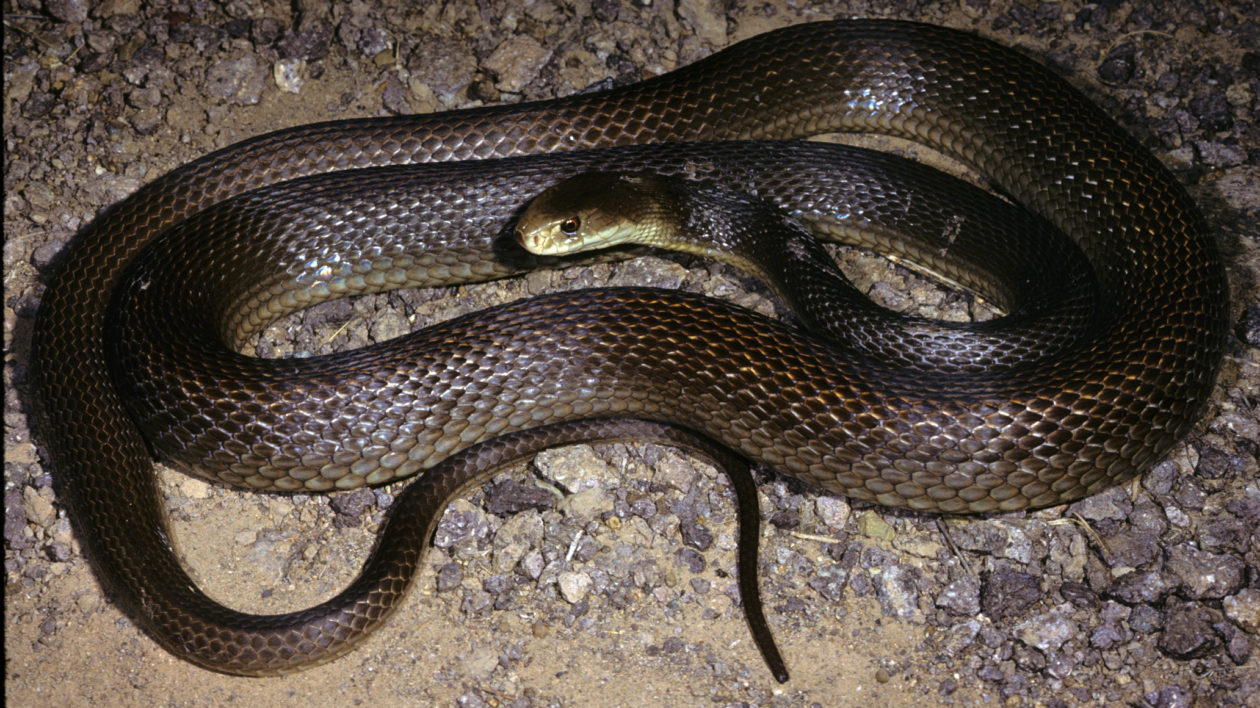You may only have as little as a couple hours, give or take, from the moment a western diamondback rattlesnake pierces your skin to when you need to be in a hospital bed hooked to antivenom.
In the world of snake venom treatment, there’s a saying for this: “Time is tissue.” Every minute that passes more cells perish, increasing the risk for lost appendages and possible death. The story is the same with other venomous snakes across the planet. But anyone spending time deep in the wilderness knows a few hours just isn’t that long.
An unusual pairing of researchers – a chemist from California and a snake venom expert from Costa Rica – hope to one day create a solution to that short time gap between infection and death, venom and tissue damage: Think EpiPen for snake bites.
Even at its most promising, it likely wouldn’t replace the need for antivenoms, the researchers say. But it could take that short window and extend it much longer and prevent lost appendages along the way. And unlike many failed experiments in treating snake bites, their research was published recently in PLOS Neglected Tropical Diseases showing success in lab mice.
A Tale of Two Scientists
José María Gutiérrez and Kenneth Shea come from wildly different academic worlds. Shea is a chemistry professor working in a lab at the University of California, Irvine studying nanotechnology. Gutiérrez is a snake expert at the University of Costa Rica, collaborating with health organizations around the globe to create antivenoms.
In late 2016, those worlds came together. The basic idea is this: Create synthetic nanoparticles that can be injected into the site of a snake bite and essentially function as a sponge, targeting, mopping up and surrounding deadly snake proteins before they spread through the body.

Shea’s lab had been working with the interaction of synthetic nanoparticles and biological macromolecules (basically microscopic bits that are human-made and nature-made) for more than a decade. He realized through the course of many years that his lab could create synthetic polymers that would bind to and inhibit biological proteins.
“Once in the clutches of a nanoparticle, you neutralize the toxin’s activity,” Shea says. But he knew very little about snake bites and venom. Before his lab could proceed much farther, they needed to collaborate with someone who worked with snakes directly and understood their complex toxins.
Enter the Instituto Clodomiro Picado, where Gutiérrez has been working with snake venoms and antivenoms for decades.
“We were finishing a study on how the spitting cobra initiates this terrible tissue damage, and we were studying the action of the venom and trying to search for therapeutic solutions to the problem,” Gutiérrez says.
Shea sent a sample of nanoparticles that bind to spitting cobra venom to Costa Rica. Gutiérrez tried them in his lab.
They worked.

The Stopgap
Antivenoms are both a miracle cure and a finicky, hyper-specific Hail Mary. If a western diamondback rattlesnake strikes your leg, and you arrive at a hospital soon enough, and that hospital has that antivenom (which can expire) on hand, and has trained medical staff who can administer it, you will survive.
If any of those go wrong however – you miss your window, the hospital doesn’t carry that particular antivenom, or doesn’t have trained staff to administer it – you may well die. Venoms are a toxic cocktail for a reason, Shea says.
“The prey is small mammals, and small mammals have immune systems, so eventually if snakes were to have a single toxin and not a complicated mixture, they would develop an immunity,” he says.
The result is a toxin that, as of right now, can really only be fought thoroughly by using antibodies created after injecting venom into livestock. That system, while perfect for each individual snake species, is imperfect in that it carries a risk of allergic reactions to livestock antibodies and can’t be used to treat a wide variety of snakes.
That’s where the nanoparticles could come in.

Both Shea and Gutiérrez are clear from the beginning that if this idea works, it won’t be a replacement for antivenoms. It will likely never be able to bind to each of the dozens of unique toxins, but it binds broadly to the worst of them and so could give you that extra bit of time to reach the proper antivenom.
It would also have an indefinite shelf life and be able to be administered by anyone, anywhere. It certainly could be better than the ineffective-at-best and harmful-at-worst traditional remedies for snake bites, both experts say.
Tourniquets are popular, but can actually cause more tissue damage, preventing blood from moving.
Cutting the skin to remove the venom simply leads to infection – and the venom is injected far too deep to squeeze or suck out. Using stun guns doesn’t actually do anything other than also burning the wound.
Another popular remedy – using a black stone or calcified bone at the site of the injection – isn’t harmful, but doesn’t work and often delays transportation to treatment.
“What should be done is basically reassure the person and take them as fast as possible to the nearest health facility,” Gutiérrez says.
Traditional remedies are popular, however, because access to antivenoms is sparse and expensive in much of the world; it could take 20 hours to reach an antivenom in Sub-Saharan Africa.

Science to Save Lives
While their dream is far from becoming a reality, it isn’t impossible. It faces hurdles – funding, primarily – but even that isn’t insurmountable. Shea has received a surprising amount of inquiries not from physicians or pharmaceutical companies but from zoos and film producers, veterinarians and dog lovers.
“We’ve heard interest from that community if it is truly effective, having that in your backpack as part of your camping equipment as opposed to some of the obsolete ways, could be a component for the serious outdoorsman,” Shea says.
He and Gutiérrez are working on international grants to help pay for additional studies hoping to eventually lead to clinical studies. The U.S. pharmaceutical market isn’t all that interested – deaths from snake bites in the U.S. are relatively few – but snake bites do affect about 2.5 million people and kill more than 100,000 people globally each year.
Their research is attracting attention from other venom experts, people trained to be skeptical of snake oil cures for snake bites.
“Initially, I thought it was fantasy stuff,” says Steve MacKessy, one of the country’s leading snake bite experts and a professor at the University of Northern Colorado. “But particularly when Kenneth Shea and his graduate student published a paper a few years ago, it was convincing,”




Excellent article on vacine for shakes.
Having been bit by a poisonous snake (a very long time ago, in a foreign country), I was very lucky to have been close to an American military base, to help save my life. Even luckier, that they had anti-venom and blood perfusion equipment in their hospital. Could’ve been the end of me, if I was further away from treatment. This is great news. Another way of “buying time” can make a big difference. I hope this research works out and they get the funding and help they need to it.